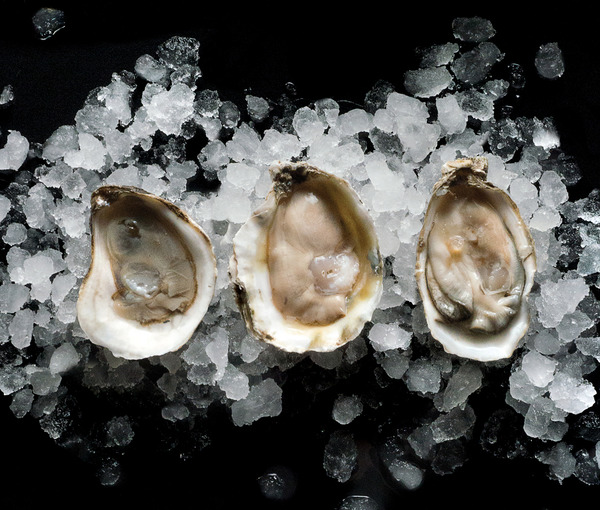The Local newsletter is your free, daily guide to life in Colorado. For locals, by locals.
Not long ago, Stoic & Genuine chef de cuisine Jorel Pierce was touring oyster beds near Seattle when he had an idea: He asked one of the oyster farmers if he could rope off a section of beach and sell his oysters directly to Pierce. When the answer was “yes,” Pierce decided to make these “exclusive” bivalves one of the focal points of the raw-bar menu at the Union Station seafood spot. “Ninety-five percent of oysters today are farm-raised because of climate change,” Pierce says. “And we can make very specific requests to these farmers to get certain flavors.” Pierce ultimately settled on three types of branded oysters for Stoic & Genuine, which he and his team named. Here, a look at how the shellfish differ, how to eat them, and which wines pair best.
The Stoic (Left)
From: Long Island Sound, New York
Characteristics: Salty, briny, crunchy
Garnish: Champagne mignonette
Pair With: Muscadet
Pierce Says: “The Stoics are my personal favorite—I prefer a more salty, briny oyster. I like them ‘neat,’ but if you want a sauce, these are perfect with the mignonette.”
The Standard (Middle)
From: Chesapeake Bay, Virginia
Characteristics: Large, balanced, salty, sweet
Garnish: Horseradish and ponzu
Pair With: Sancerre (Sauvignon Blanc)
Pierce Says: “These are big boys—three to four inches. The balanced umami flavor is fantastic with Asian flavors like the ponzu and horseradish.”
The Genuine (Right)
From: South Puget Sound, Washington
Characteristics: Sweet, buttery, crunchy
Garnish: Sherry amontillado granita
Pair With: Champagne (or other sparkling wine)
Pierce Says: “What most people are looking for in an oyster. The buttery flavor of the Genuine goes nicely with the leather and wood notes of the sherry [in the garnish]—we’re balancing extremes.”









